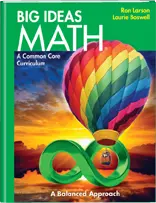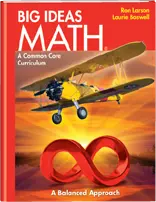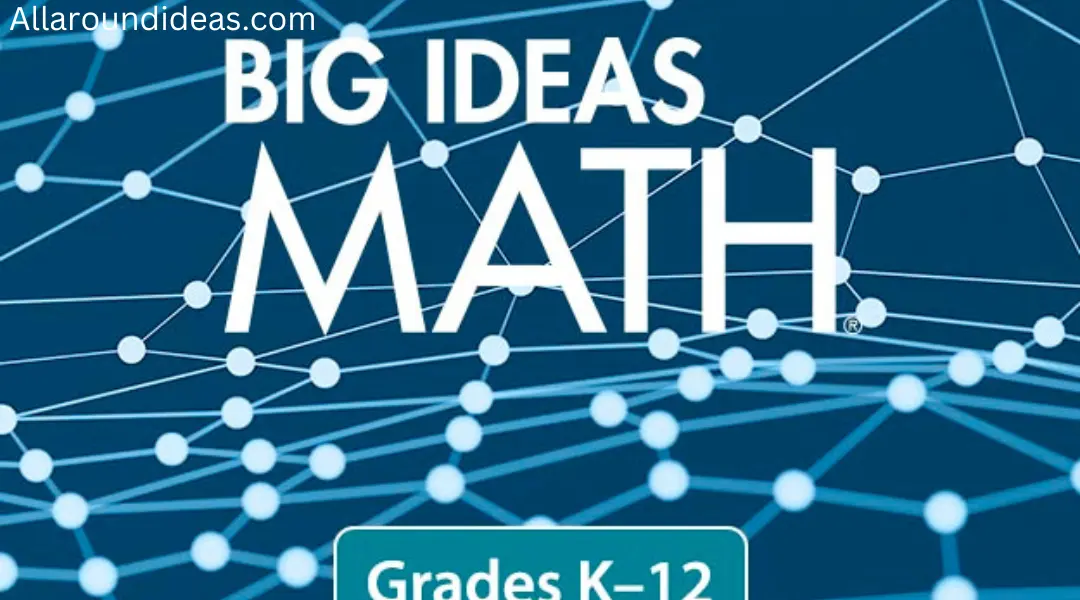Mathematics often conjures images of rigid formulas, tedious calculations, and abstract concepts. However, the “Big Ideas Math” approach in math education reshapes this perspective, focusing on overarching themes and connections that make math more relevant and engaging. This article explores the core principles of Big Ideas Math, its benefits for students, and practical strategies for implementation in classrooms.
If you want some more information about Bachelorette party ideas then checkout our last blog post.

Understanding Big Ideas in Mathematics
Big Ideas in Mathematics refers to fundamental concepts that form the backbone of mathematical understanding. These concepts transcend specific topics and grade levels, allowing students to see the connections between different areas of math. Some of the key Big Ideas include:
- Patterns and Relationships: Recognizing patterns is essential in mathematics. It helps students understand sequences, functions, and algebraic relationships. For example, understanding how to identify patterns in numbers or shapes can lay the groundwork for more complex topics like functions and equations.
- Reasoning and Proof: Mathematics is not just about finding the right answer; it’s also about understanding why that answer is correct. Encouraging students to reason through problems and develop proofs fosters critical thinking skills that are applicable beyond mathematics.
- Multiple Representations: Math can be represented in various forms—graphs, equations, tables, and diagrams. Teaching students to interpret and convert between these representations enhances their understanding and problem-solving abilities.
- Mathematical Modeling: This involves using mathematics to solve real-world problems. By framing problems in a mathematical context, students can see the relevance of what they are learning and develop skills that are applicable in everyday life.
- Connections Across Disciplines: Mathematics is interconnected with other subjects such as science, economics, and art. Highlighting these connections can help students appreciate the broader applications of math and foster interdisciplinary learning.
- If you want some more information about Bachelorette party ideas then checkout our last blog post.
The Benefits of Big Ideas Math
1. Enhances Engagement and Motivation
Traditional math instruction often focuses on rote memorization and procedural skills, which can lead to disengagement. In contrast, the Big Ideas approach emphasizes conceptual understanding and real-world applications, making math more relevant and interesting. When students see the connection between math and their everyday lives, they are more likely to engage with the material.
2. Develops Critical Thinking Skills
By focusing on reasoning, proof, and problem-solving, Big Ideas Math encourages students to think critically. They learn to approach problems methodically, analyze different solutions, and justify their reasoning. These skills are invaluable not only in mathematics but also in various aspects of life and other academic subjects.
3. Promotes Deep Understanding
The Big Ideas approach allows students to grasp the underlying concepts of mathematics rather than just memorizing procedures. This deep understanding enables them to apply their knowledge in new situations, fostering a more flexible and adaptive mathematical mindset.
4. Supports Differentiation
Every student learns differently, and the Big Ideas framework accommodates diverse learning styles. By presenting concepts through multiple representations and encouraging various methods of problem-solving, teachers can meet the needs of all students, providing appropriate challenges and support.

Implementing Big Ideas Math in the Classroom
1. Start with Big Questions
To foster a Big Ideas mindset, teachers should frame their lessons around essential questions that encourage exploration. For example, instead of simply teaching the Pythagorean theorem, a teacher might ask, “How can we use triangles to measure distances we can’t directly measure?” This approach invites students to investigate and discover the underlying concepts.
If you want some more information about Bachelorette party ideas then checkout our last blog post.
2. Incorporate Real-World Applications
Integrating real-world scenarios into math lessons can illustrate the relevance of Big Ideas. For instance, when teaching proportions, teachers might ask students to calculate ingredients for a recipe based on serving size. This not only makes the lesson engaging but also demonstrates how math is used in everyday decisions.
3. Use Collaborative Learning
Group work and collaborative problem-solving encourage students to share ideas, challenge each other’s thinking, and build a collective understanding of mathematical concepts. Teachers can facilitate discussions around Big Ideas, allowing students to articulate their reasoning and learn from one another.
4. Emphasize Multiple Representations
Encouraging students to explore mathematical concepts through various representations deepens their understanding. For instance, when teaching functions, students can represent them graphically, numerically, and verbally. This multi-faceted approach enables students to see the connections between different representations and enhances their overall comprehension.
5. Foster a Growth Mindset
Promoting a growth mindset within the classroom encourages students to embrace challenges and view mistakes as learning opportunities. Teachers can model this mindset by sharing their own problem-solving processes and celebrating effort and perseverance, rather than just correct answers.
Challenges and Considerations
While the Big Ideas approach offers numerous benefits, implementing it in the classroom can pose challenges. Teachers may need professional development to effectively transition from traditional methods to a Big Ideas framework. Additionally, standardized testing often emphasizes procedural knowledge, which can conflict with a conceptual focus.
If you want some more information about Bachelorette party ideas then checkout our last blog post.
To overcome these challenges, educators can advocate for curriculum changes that align with the Big Ideas philosophy and seek support from administration and colleagues. Sharing success stories and evidence of student growth can help garner support for this transformative approach.

Conclusion
Big Ideas Math represents a shift in how mathematics is taught and understood. By focusing on core concepts, fostering critical thinking, and emphasizing real-world applications, this approach makes math more engaging and relevant for students. As educators embrace these principles, they can cultivate a generation of mathematically literate individuals who are equipped to tackle complex problems both in the classroom and beyond. Through the lens of Big Ideas, mathematics becomes not just a subject to be studied, but a powerful tool for understanding the world.
If you want some more information about Bachelorette party ideas then checkout our last blog post.


